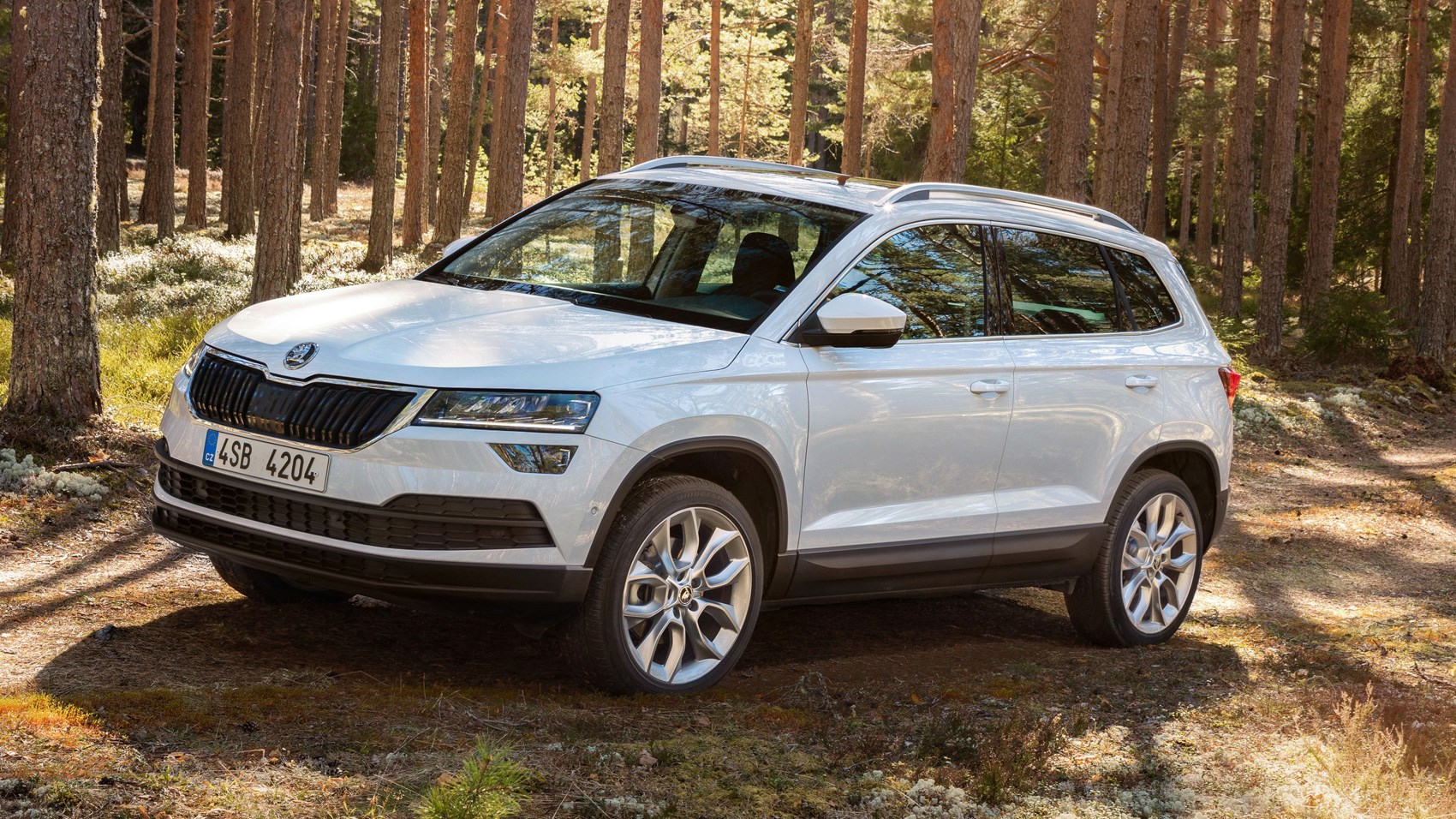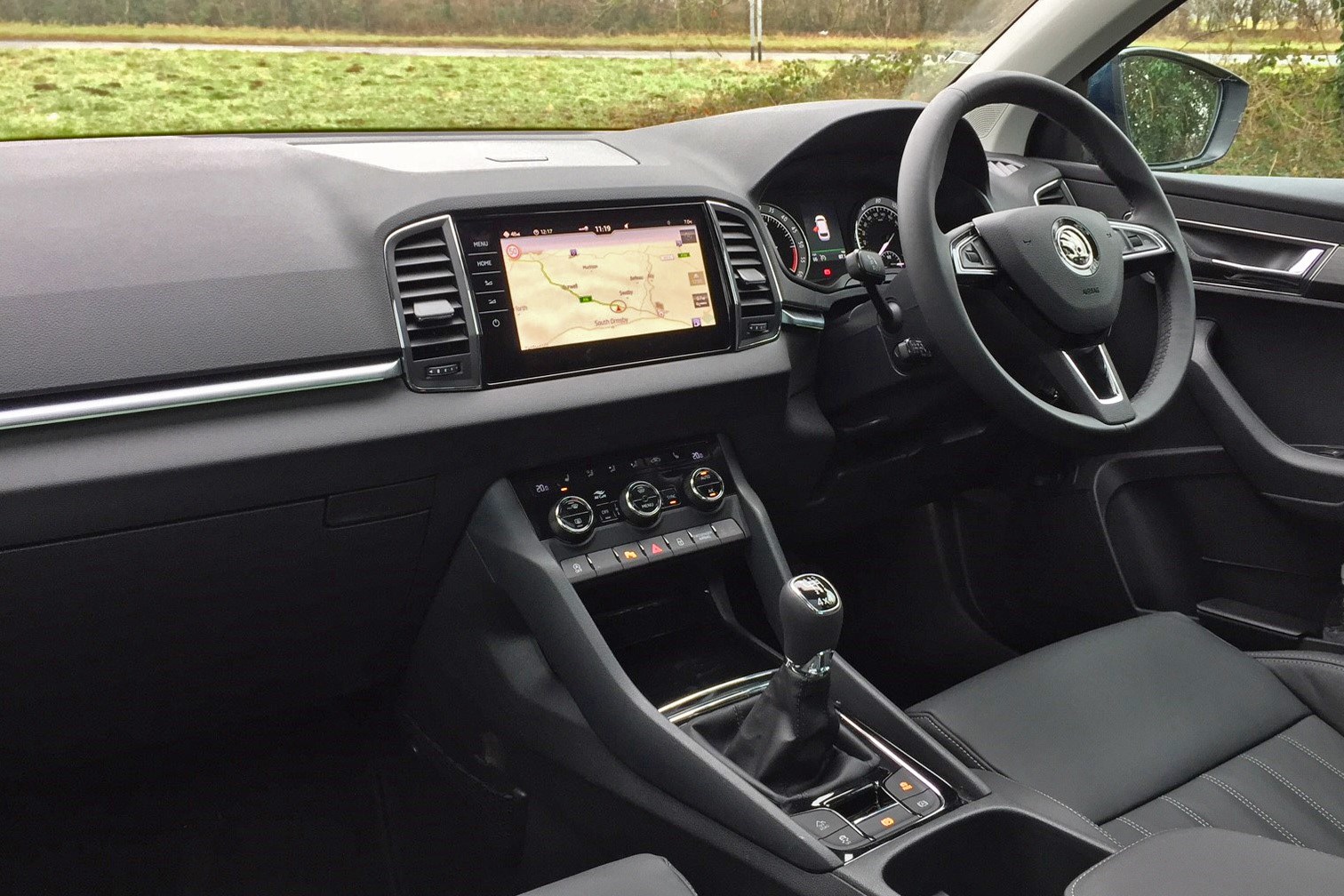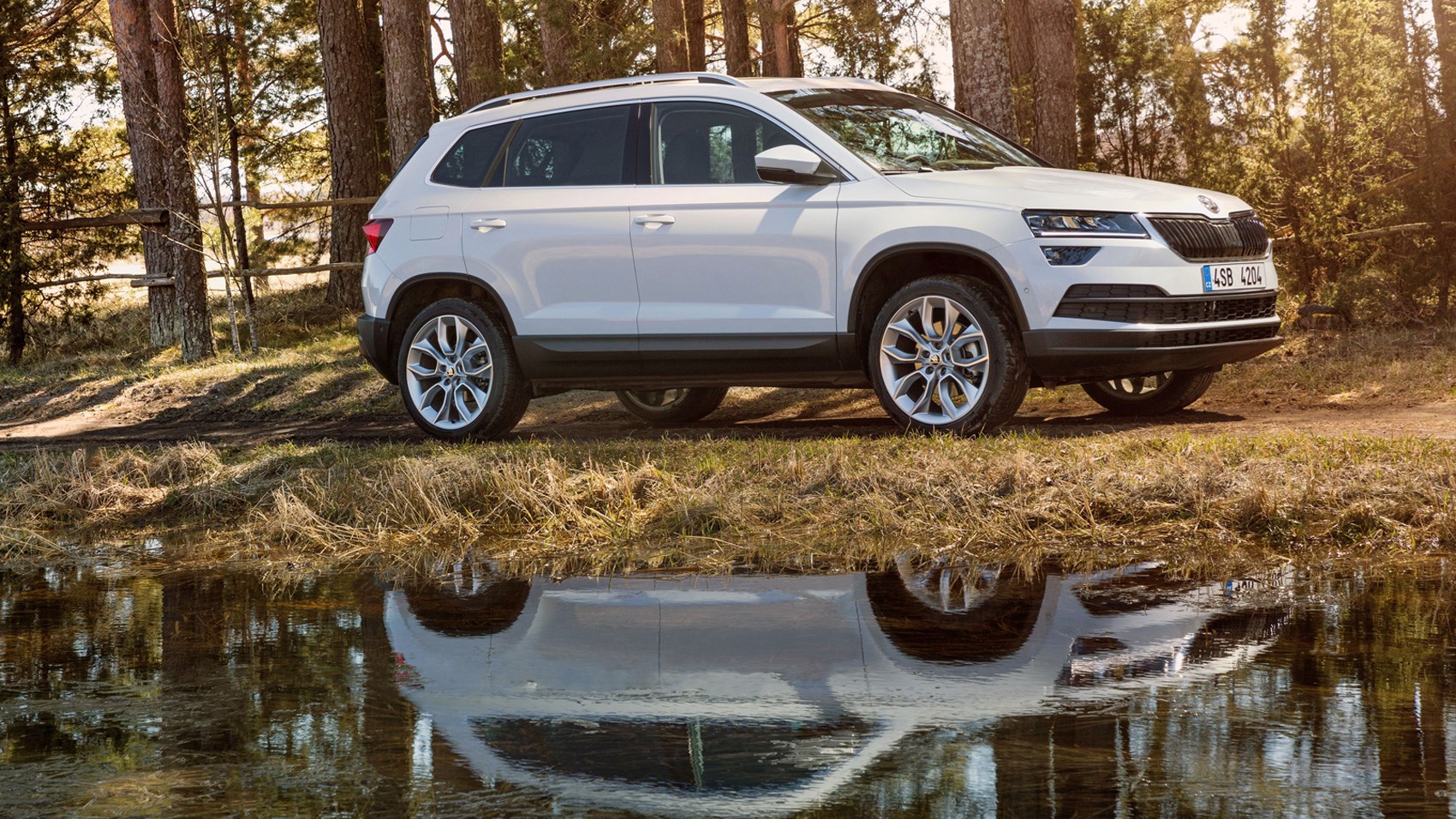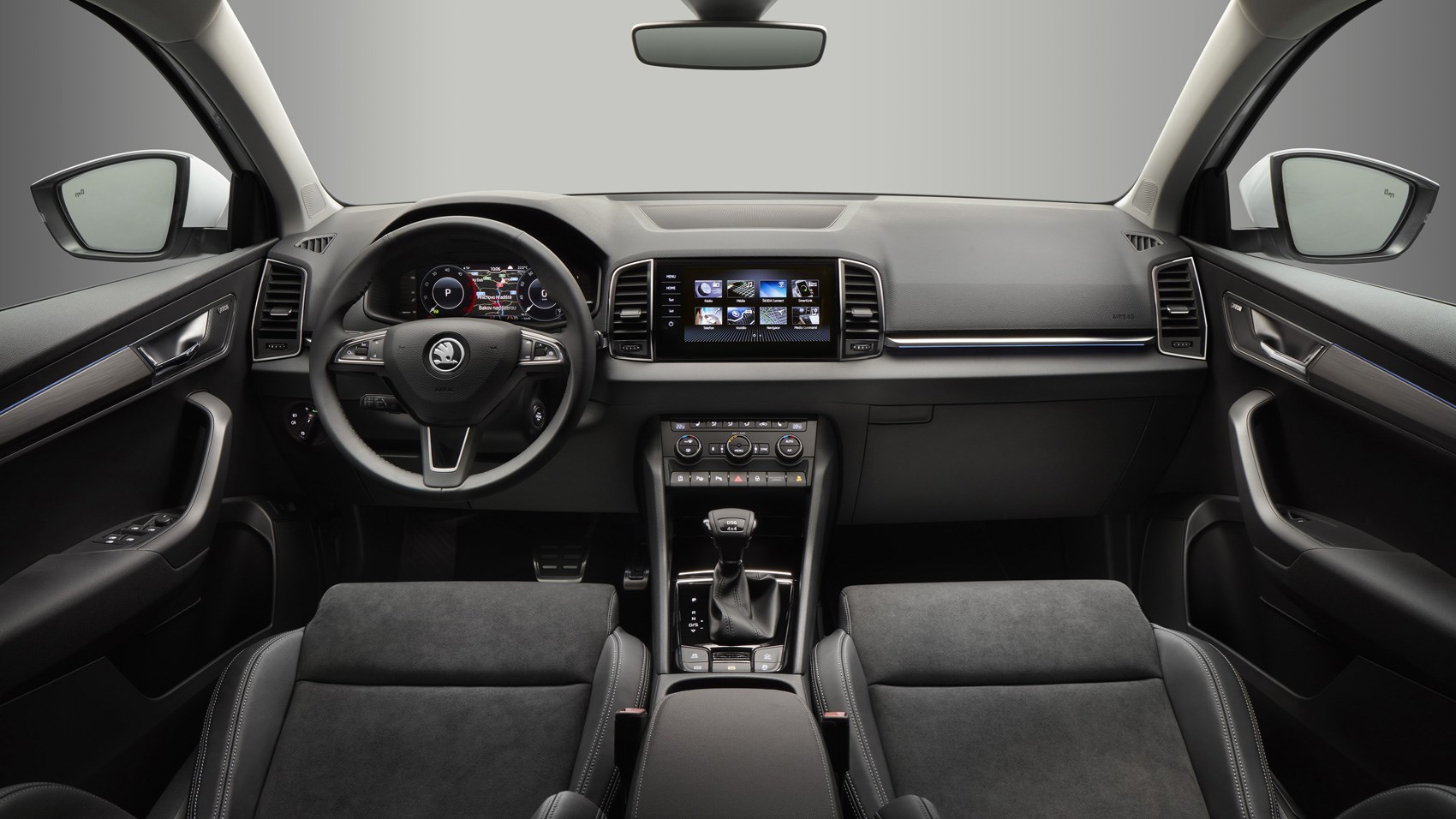► Skoda’s Yeti replacement driven
► Punchy 148bhp Evo and AWD diesel tested
► Baby Kodiaq or poor relation?
‘Honey, I shrunk the Kodiaq’ is probably the first thing that springs to mind when you clap eyes on the Karoq, Skoda’s all-new C-segment SUV. Indeed it shares more than just a passing resemblance to the Kodiaq, but is that really such a bad thing when big bro has won just about every large family car award out there?
Well. no. But in a section of the market that seems to gain a new entrant every month the Karoq needs more than just good genes…
Skoda Karoq review: design
Not quite. While the Kodiaq is a fully-fledged member of the Chelsea tractor brigade, the Karoq is noticeably more petite in its build. Even so, luggage space is one of the best in its class, at 588 litres with the rear seats in place and 1605 with them folded down.
If that’s not enough, the Varioflex rear seats (standard on SE L and Karoq Edition cars) can be removed entirely, creating a gargantuan 1810 litres of luggage capacity. You can’t have the variable-height boot floor in conjunction with Varioflex rear seating, so it’s one or the other.

Hop into the cabin and both the driver and passengers will be blessed with oodles of leg and headroom (even with the panoramic sunroof fitted), unless you’re sitting in the middle rear seat. Again, Varioflex seating means it’s a dedicated pew rather than just a slab of flat(ish) fabric, but the chunky transmission tunnel means adults will have to share legroom with those on the outer rear seats.
Other Skoda practicality boons include massive front door pockets which can each swallow a 1.5-litre bottle of water, a removable bin, a retractable tow bar (which, be warned, can cause serious damage to your shins when deployed) and handy shopping bag hooks in the boot.

Skoda Karoq review: how does it drive?
Good news is that despite it sharing the same platform as the Seat Ateca, the Karoq is pleasantly different out on the road. Unlike the Ateca, Skoda hasn’t tried to make it ‘sporty’, instead going with the mantra of ‘comfort is King’.
The end result is refreshing. Sure, the steering isn’t as sharp and the body roll isn’t as well contained, but the Karoq suits those who drive around like they’re carrying a car load of people.
Ride comfort is well judged, cushioning out big dips and bumps in the road, while refinement levels are pleasantly hushed – even if wind noise creeps up over 70mph or so.
If you’re after the very best comfort and refinement levels that the Karoq has to offer, though, stick to either the base 1.0-litre petrol or the 2.0-litre diesel 4×4 version.
The former feels more softly sprung than any other version (and boasts the quietest engine), while the latter benefits from standard-fit multi-link rear suspension. All other models have a less-advanced torsion beam setup, which increases noise from the rear end of the chassis.
Skoda Karoq review: petrol and diesel engines
Don’t get us wrong, it’s punchy enough (0-60mph takes 8.1 seconds) and should pair up nicely with the seven-speed DSG transmission (we only drove it with the six-speed manual). However, considering how well the 148bhp 1.5-litre TSI Evo works in other Volkswagen Group vehicles, we were a little underwhelmed by the sheer level of engine noise at high revs.

It might not be the end of the world as you’ll rarely be venturing north of 4000rpm, but the harsh engine note of our press car clashed with the otherwise strong refinement levels. It feels as if there’s very little power available past 4000rpm, too, making the 2.0-litre diesel a far more tempting proposition when you consider the potential real-world fuel savings.
And the diesel Karoq?
This is all well and good, but what if you’re in that minority who wants their compact crossover to be blessed with a degree of off-road usability? Well, there’s a four-wheel drive Karoq to suit, but you’re restricted to the 2.0-litre TDI diesel powerplant.
On paper its performance is similar to the 1.5 TSI Evo, with 148bhp and 251lb ft of torque enough to muster a 121mph top speed and a standstill-to-60mph time of 8.4 seconds when mated to the slick-shifting six-speed manual.
Disappointingly it’s not much more economical than its front-drive petrol sibling, with an official claim of 56.5mpg for the TDI versus 51.4mpg. This says more about the TSI’s active-cylinder technology fuel-saving than it does about the diesel being poor.
The villain of the piece is an extra 183kg of heft courtesy of the heavier diesel motor and the four-wheel drive system. Not only that, it’s almost £3,300 more expensive – one suspects that the regular Karoq shod with a quartet of ribbed and grippy winter tyres would prove more than ample for much of Skoda’s UK client base.
Is it a nice place to sit?
As you’d expect with Skoda, everything is designed and screwed together with the sympathy of a designer who has four young children and a mischievous Labrador puppy hell-bent on using the Karoq as its personal chew toy. So what it lacks in design flair, it makes up for in durability and ease of use.

All the major controls are well-placed and intuitive, plus the big, supportive front seats provide enough adjustment for just about every driving position.
What about standard kit?
We didn’t drive a UK-spec car, but can confirm the big-selling SE L model is set for standard equipment including – but not limited to – an 8.0-inch touchscreen infotainment system, cruise control, dual-zone climate control, front assist, DAB radio, a rear view camera and Smartlink phone compatibility. And breathe.
Skoda Karoq review: verdict
If you’ve got this far down the review you can probably guess that this is a four-star car all day long. It excels in the areas it needs to – comfort, practicality, durability and value for money – and puts in a solid display in all other categories. If you want a practical family car but don’t need the sheer heft of the Kodiaq, its lookalike sibling does the job very well indeed.
As for engines, the 1.5-litre petrol will be the motor of choice for many, but we’d be tempted to opt for the trusty 2.0-litre diesel and revel in the extra torque, fuel economy and upgraded suspension.